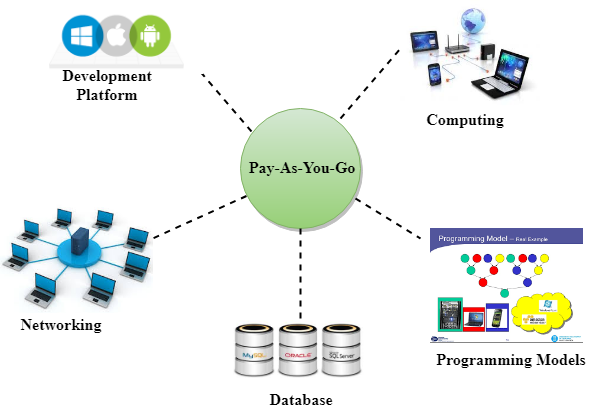Storage Services
EC2 - Backbone of AWS
AWS Route53
Database Services
Application Services
AWS VPC
- What is VPC
- Creating your own custom VPC
- Direct Connect
- NAT Gateways
- What is a Bastion Host
- VPC Endpoint
- What is a VPC FlowLog
- NACL
- What is a Security Group
- Why do we need a Data Pipeline
- AWS Lightsail
- Amazon SES
- AWS CloudFormation
- What is AWS CLI
- What is Amazon EMR
- Amazon Relational Database Service(Amazon RDS)
- AWS Athena
- What is AWS Amplify
- Amazon Cognito
- What is AWS Console
AWS Interview Questions
AWS Tutorial
AWS tutorial provides basic and advanced concepts. Our AWS tutorial is designed for beginners and professionals.
AWS stands for Amazon Web Services which uses distributed IT infrastructure to provide different IT resources on demand.
Our AWS tutorial includes all the topics such as introduction, history of aws, global infrastructure, features of aws, IAM, Storage services, Database services, etc.
What is AWS?
- AWS stands for Amazon Web Services.
- The AWS service is provided by the Amazon that uses distributed IT infrastructure to provide different IT resources available on demand. It provides different services such as infrastructure as a service (IaaS), platform as a service (PaaS) and packaged software as a service (SaaS).
- Amazon launched AWS, a cloud computing platform to allow the different organizations to take advantage of reliable IT infrastructure.
Uses of AWS
- A small manufacturing organization uses their expertise to expand their business by leaving their IT management to the AWS.
- A large enterprise spread across the globe can utilize the AWS to deliver the training to the distributed workforce.
- An architecture consulting company can use AWS to get the high-compute rendering of construction prototype.
- A media company can use the AWS to provide different types of content such as ebox or audio files to the worldwide files.
Pay-As-You-Go
Based on the concept of Pay-As-You-Go, AWS provides the services to the customers.
AWS provides services to customers when required without any prior commitment or upfront investment. Pay-As-You-Go enables the customers to procure services from AWS.
- Computing
- Programming models
- Database storage
- Networking

Advantages of AWS
1) Flexibility
- We can get more time for core business tasks due to the instant availability of new features and services in AWS.
- It provides effortless hosting of legacy applications. AWS does not require learning new technologies and migration of applications to the AWS provides the advanced computing and efficient storage.
- AWS also offers a choice that whether we want to run the applications and services together or not. We can also choose to run a part of the IT infrastructure in AWS and the remaining part in data centres.
2) Cost-effectiveness
AWS requires no upfront investment, long-term commitment, and minimum expense when compared to traditional IT infrastructure that requires a huge investment.
3) Scalability/Elasticity
Through AWS, autoscaling and elastic load balancing techniques are automatically scaled up or down, when demand increases or decreases respectively. AWS techniques are ideal for handling unpredictable or very high loads. Due to this reason, organizations enjoy the benefits of reduced cost and increased user satisfaction.
4) Security
- AWS provides end-to-end security and privacy to customers.
- AWS has a virtual infrastructure that offers optimum availability while managing full privacy and isolation of their operations.
- Customers can expect high-level of physical security because of Amazon's several years of experience in designing, developing and maintaining large-scale IT operation centers.
- AWS ensures the three aspects of security, i.e., Confidentiality, integrity, and availability of user's data.
AWS Tutorial Index
AWS Tutorial
- AWS Tutorial
- History of AWS
- AWS Features
- Global Infrastructure
- AWS Free Tier
AWS IAM
- AWS IAM
- AWS SAML
- IAM Identities
- IAM Roles
- IAM Roles Use Cases
- Creating IAM Roles
AWS Storage Services
- AWS S3
- AWS S3 Concepts
- Creating S3 Bucket
- AWS Storage Classes
- AWS Versioning
- Cross Region Replication
- Lifecycle Management
- CloudFront CDN
- Creating CloudFront CDN
- Storage Gateway
- AWS Snowball
- S3 Transfer Acceleration
EC2 - Backbone of AWS
- AWS EC2
- AWS EBS
- Creating an EC2 instance
- EBS Volume
- Security Group
- AWS AMI
- Creating an AMI
- AWS Load Balancing
- Creating Load Balancer
- AWS Lambda
- Creating a Lambda
- CloudWatch EC2
- AWS Bash Script
AWS Route53
- What is DNS
AWS Database Services
- Relational Database
- Non Relational Database
- AWS Elasticache
- Creating an RDS Instance
- AWS DynamoDB
- AWS Aurora
- AWS Redshift
AWS Application Services
- AWS SQS
- AWS SWF
- AWS SNS
- Elastic Transcoder
- API Gateway
- AWS Kinesis
AWS VPC
- AWS VPC
- Creating your own custom VPC
- Direct Connect
- NAT Gateways
- AWS Bastion Host
- AWS VPC Endpoint
- AWS VPC FlowLogs
- AWS NACL
- NACL vs Security Group
- AWS Data Pipeline
AWS Interview Questions
- AWS Interview Questions


